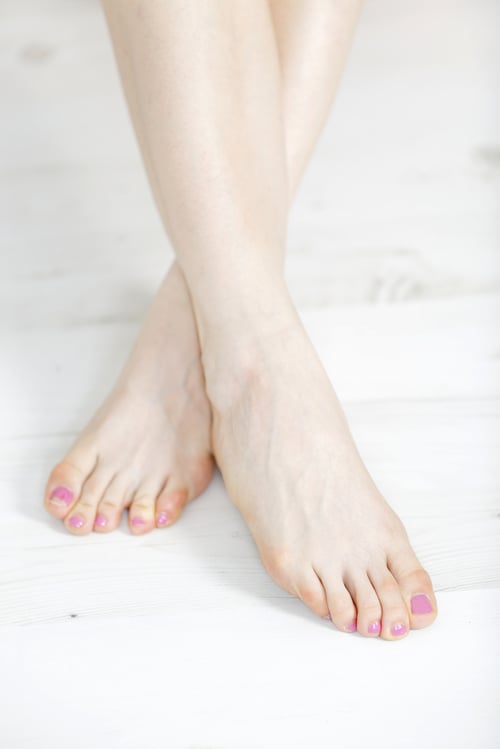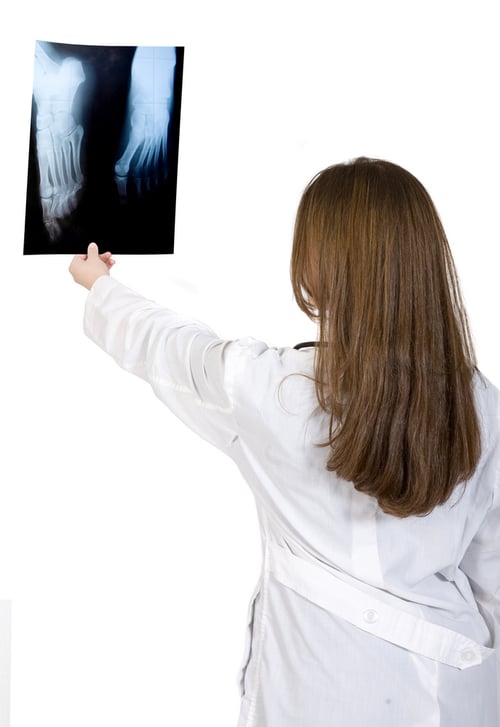.png?width=900&name=Untitled%20design%20(66).png)
When your toes aren’t positioned with one right next to the other in a row but instead you have a toe that is overlapping, it is a condition called "Crossover Toes". It’s not uncommon for people to get crossover toes.
Variety of Reasons for Overlapping Toes
Toes start to overlap because of genetics (you inherit the condition from parents), or because of the way you move when you walk. Sometimes your toes will overlap because the footwear you have chosen are too tight and don’t fit properly.
People who have arthritis sometimes find their feet growing stiff, which makes them walk differently. Then, the structure of the foot adjusts, leading to one toe overlapping the next one.
Understanding Crossover Toes
People can get crossover toes at any stage in life, from infancy to old age.
Sometimes individuals confuse crossover toe with hammer toes. They are related, but there is more going on with the mechanics of the foot as it bears weight from standing, walking and running when you have a case of crossover toe.
As you walk, too much weight falls on the ball of the foot (located beneath the joint of your second toe). With more and more pressure building up during normal movement, the ligaments become progressively weaker.
At this point, the toe joint is unable to keep your toe stable in its normal place. The toe crosses over.
Crossover Toes Often Occur With Bunions
The painful condition known as crossover toe frequently appears in.png?width=172&name=Untitled%20design%20(66).png) patients who have bunions. The abnormal growth adds to the displacement of one toe toward the next one.
patients who have bunions. The abnormal growth adds to the displacement of one toe toward the next one.
And remember that bunions are often associated with shoes that do not fit correctly, rubbing and putting unwarranted pressure on the feet. So if you have crossover toes, paying attention to your footwear is of paramount importance.
Making sure that your footwear fits correctly may require you to visit a shoe specialist who knows how to help people avoid pinching shoes that lead to bunions.
About Overlapping Toes
The pinky is the toe most often seen overlapping in patients, but you may experience the second toe and big toe overlapping, as noted by Healthline.
Wearing narrow shoes or shoes that have pointy toes (or high heels) will gradually make your toe move out of alignment. Do yourself a favor and ditch such uncomfortable footwear and replace it with shoes that are comfortable to wear, providing all the support you need without compressing your toes to the point that they overlap one another.
Family History of Curly Toes
One variant is underlapping toes. We commonly see a form of this as congenital curly toes in patients who come through our doors. The malady of curly toes tends to be passed on through generations. When it runs in the family, you may see toes number three, four and five affected at the same tie.
Get Help for Your Crossover Toes Today
With an uncomfortable condition like crossover toes, you’ll want to see a foot specialist as soon as possible. You don’t want to ignore the symptoms, because the discomfort can increase.
Fortunately, the team at Sweeney Foot and Ankle Specialists is “standing by” to assist! To learn about our approach to crossover toes and other cases of overlapping toes, or to book an appointment, please contact Sweeney Foot and Ankle Specialists today.






